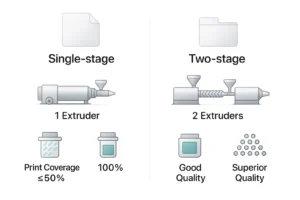Single-stage vs. Two-stage Plastic Recycling Machines: Key Differences Explained
Compare single-stage and two-stage plastic recycling machines by structure, degassing, filtration, and processing capability. Choose the right solution for your waste material needs.

